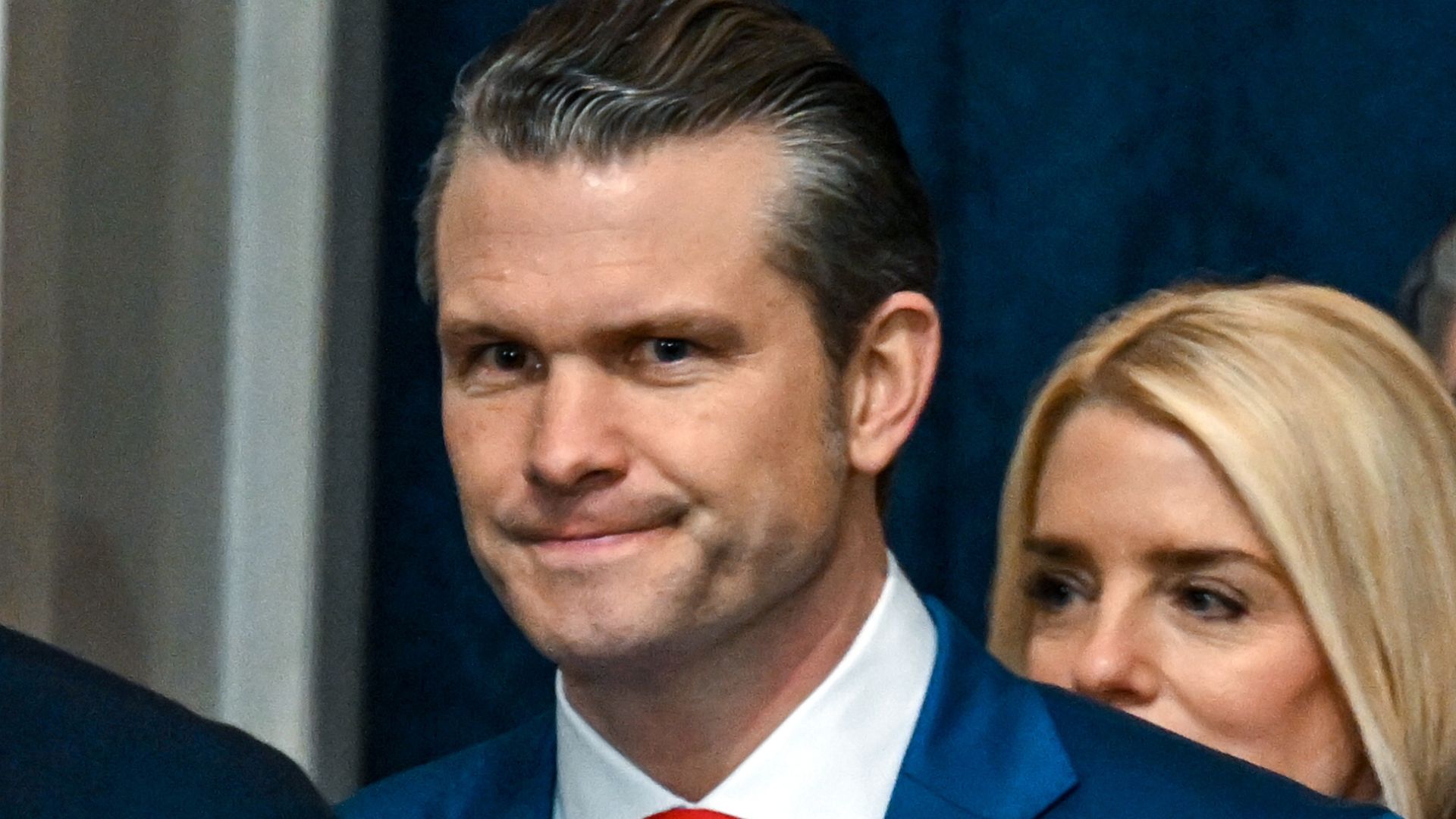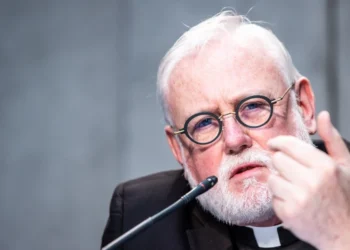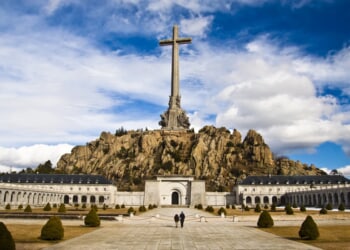
U.S. Secretary of Defense Pete Hegseth unveiled a plan on Sunday to enhance the U.S. military command in Japan, emphasizing the country’s crucial role in addressing Chinese aggression.
Fantastic welcome by the @ModJapan_en Honor Guard—a testament to the strength, discipline, and tradition of the U.S.-Japan alliance. I look forward to discussing the need for credible deterrence in the Indo-Pacific. pic.twitter.com/ZtNc67IaHO
— Secretary of Defense Pete Hegseth (@SecDef) March 30, 2025
Elon Musk Called This Financial News ‘Terrifying’
Hegseth made the announcement during a meeting with Japanese Defense Minister Gen Nakatani in Tokyo, where he underscored Japan’s importance in maintaining security in the Indo-Pacific region.
Productive meetings with Defense Minister Nakatani Gen today. Japan is an indispensable ally, and together, we strengthen our commitment to peace through strength in the Indo-Pacific. Stronger, united, and ready. pic.twitter.com/UdGT3oD9sN
— Secretary of Defense Pete Hegseth (@SecDef) March 30, 2025
Hegseth called Japan “our indispensable partner” in the effort to counter communist Chinese military aggression, particularly in the Taiwan Strait.
FREE Concealed Carry Gun Laws & Reciprocity Map
He emphasized the shared “warrior ethos” between the U.S. and Japanese forces, which he believes is essential in deterring threats from China.
“Japan is a cornerstone of peace and security in the Indo-Pacific,” Hegseth stated, reiterating the Trump administration’s ongoing commitment to strengthening ties with Japan.
US Defense Secretary Pete Hegseth described Japan as indispensable for tackling what he called ‘Chinese military aggression’ and said implementing a plan to upgrade the US military command in the country would get under way https://t.co/Q4nVTR9o0a pic.twitter.com/eqVadfmZrM
— Reuters (@Reuters) March 30, 2025
The U.S. military’s efforts to deepen coordination with Japan were already underway prior to Hegseth’s visit.
In 2024, the Biden-Harris administration announced a major restructuring of the U.S. military command in Japan to enhance collaboration between the two nations.
The restructuring will include the placement of a combined operational commander in Japan, who will serve as a counterpart to the head of Japan’s newly established joint operations command.
This restructuring aims to address the growing concerns about China’s military assertiveness in the region, as both the U.S. and Japan identify China as their “greatest strategic challenge.”
Hegseth’s praise for Japan comes as a stark contrast to his earlier criticisms of European allies.
In February, he warned European nations that they should not assume the U.S. military presence in Europe would remain indefinite, urging them to take more responsibility for their own defense.
The U.S. and Japan’s security relationship has long been a topic of debate, particularly regarding the defense costs shared between the two nations.
President Donald Trump has frequently pointed out that the bilateral defense treaty, in which the U.S. pledges to defend Japan, is not reciprocal.
In his first term, Trump repeatedly called on Japan to contribute more financially to host U.S. troops on its soil.
Japan is currently home to approximately 50,000 U.S. military personnel, along with fighter jet squadrons and the U.S. Navy’s only forward-deployed aircraft carrier strike group.
These assets are strategically positioned along a 1,900-mile stretch of islands in East Asia, which provide a significant counterbalance to China’s growing military presence.
In response to regional security challenges, Japan has made substantial efforts to modernize its military, including a significant increase in defense spending.
Japan’s military buildup includes funding for the acquisition of longer-range missiles.
However, Japan’s operational capacity remains constrained by its pacifist constitution, adopted after its defeat in World War II, which prohibits the country from initiating war.
Hegseth and Nakatani discussed several key initiatives aimed at strengthening bilateral defense capabilities.
They agreed to expedite the joint production of beyond-visual-range air-to-air AMRAAM missiles and to explore the possibility of collaborating on the production of SM-6 surface-to-air defense missiles to address ongoing munitions shortages.
According to Nakatani, these steps are critical for enhancing the defense capabilities of both nations.
Furthermore, Hegseth requested greater access to Japan’s strategic southwest islands, particularly those along the East China Sea, which lies near Taiwan.
These islands are seen as crucial to U.S. and Japanese defense strategies in the region, as tensions with China continue to rise.
Hegseth’s visit to Japan follows his trip to the Philippines as part of his first official visit to Asia.
On Saturday, he attended a memorial service on Iwo Jima, a historic site of intense fighting between U.S. and Japanese forces during World War II.
The service marked the 80th anniversary of the battle, which remains a symbol of the complex history between the two nations.
As the U.S. and Japan continue to strengthen their military partnership, their efforts reflect a shared commitment to maintaining stability in the Indo-Pacific region amid growing concerns about Chinese expansionism.
American Made Patriotic Apparel – Save 15% with Promo Code MERICA
The opinions expressed by contributors and/or content partners are their own and do not necessarily reflect the views of LifeZette. Contact us for guidelines on submitting your own commentary.

![Sec. Hegseth Reveals US Command Upgrades to Deter China [WATCH]](https://www.right2024.com/wp-content/uploads/2025/03/Sec-Hegseth-Reveals-US-Command-Upgrades-to-Deter-China-WATCH-750x375.jpg)



![Trump's Admin Guts Another ‘Rogue Government Agency with Zero Accountability’ [WATCH]](https://www.right2024.com/wp-content/uploads/2025/03/Trumps-Admin-Guts-Another-‘Rogue-Government-Agency-with-Zero-Accountability-350x250.jpg)



![‘We All Owe Him (Elon) a Huge Debt of Gratitude’ [WATCH]](https://www.right2024.com/wp-content/uploads/2025/03/‘We-All-Owe-Him-Elon-a-Huge-Debt-of-Gratitude-350x250.jpg)
![NCAA Champ Salutes President Trump After ‘BIGGEST UPSET IN COLLEGE WRESTLING HISTORY’ [WATCH]](https://www.right2024.com/wp-content/uploads/2025/03/NCAA-Champ-Salutes-President-Trump-After-‘BIGGEST-UPSET-IN-COLLEGE-350x250.jpg)






